Crafting a job offer proposal for an executive position can be a game changer for both your organization and the candidate. It's essential to communicate not just the details of the role, but also the vision and culture of your company to attract top talent. A well-structured letter can effectively showcase the benefits and expectations, making it clear why this opportunity stands out. Ready to dive into the details of creating an impactful executive job offer letter? Let's explore further!

Position title and role description
An executive job offer proposal typically begins with a clear articulation of the position title and an encompassing description that captures the scope of responsibilities, required qualifications, and expected contributions to the company's strategic goals. For instance, Chief Financial Officer (CFO) position involves overseeing financial planning, risk management, record-keeping, and financial reporting, ensuring compliance with regulatory standards. The ideal candidate should possess an advanced degree in finance or accounting, a proven track record in a similar leadership role, and a deep understanding of corporate finance principles. The CFO will play a pivotal role in shaping the financial strategy and driving the organization towards sustainable growth, directly impacting stakeholders and company valuation in a dynamic marketplace.
Compensation package details
When a company extends an executive job offer, the compensation package typically includes various components that reflect both the responsibilities and the demands of the role. A competitive salary often starts at six figures, with many executives earning base salaries ranging from $150,000 to upwards of $500,000 depending on industry and company size. Additionally, performance-based bonuses can significantly enhance total earnings, often ranging from 20% to 50% of the base salary. Stock options are another critical element, allowing executives to purchase company shares at a predetermined price, promoting alignment with shareholder interests. Benefits such as health insurance, retirement plans, and paid time off further enrich the compensation package, providing financial security and work-life balance. Relocation assistance may also be included for executives moving across states or countries, ensuring a smooth transition into their new role. Additionally, considerations for long-term incentives can vary, including deferred compensation plans or restricted stock units, which reward performance over several years.
Benefits and perks overview
The executive job offer includes a comprehensive benefits and perks overview aimed at enhancing the overall compensation package. Health insurance covers medical, dental, and vision plans, ensuring access to quality care for employees and their families, with premiums subsidized by the company. A retirement plan featuring a 401(k) with a generous company match enables long-term financial security. Additional perks such as flexible work arrangements, including remote work options and adjustable hours, contribute to work-life balance. Performance bonuses tied to key performance indicators (KPIs) provide incentives for achieving specific company goals. Professional development funds support ongoing education and training, promoting personal growth and skill enhancement. Moreover, paid time off (PTO) allowances offer ample vacation days, fostering relaxation and preventing burnout.
Start date and reporting structure
An executive job offer proposal outlines key details such as the start date and reporting structure, essential for establishing clarity in the hiring process. Typically, a proposed start date should fall within a reasonable timeframe, usually between two to four weeks from the date of acceptance, allowing for adequate transition planning. The reporting structure details the hierarchical relationships within the organization, indicating the executive's direct supervisor, which often includes titles like Chief Executive Officer or Chief Operating Officer, along with key team members or departments. This transparency fosters understanding of accountability and communication channels within the company's organizational framework. Additionally, aligning the start date with significant company events, such as quarterly meetings or product launches, can enhance the onboarding experience.
Acceptance deadline and next steps
The executive job offer proposal outlines essential elements, including the acceptance deadline and next steps. An acceptance deadline specifies the last date for the candidate to confirm their acceptance, typically set within a week or ten days after the offer date. This timeframe allows the candidate to consider the offer, including salary, benefits, and any relocation requirements related to the position. Next steps generally involve the candidate affirming their acceptance via email or signed agreement, followed by scheduling a start date. Additional steps may include adapting to on-boarding procedures, such as completing necessary paperwork, setting up benefits enrollment, and scheduling orientation meetings. Adherence to these timelines enhances clarity and paves the way for a seamless transition into the new role.

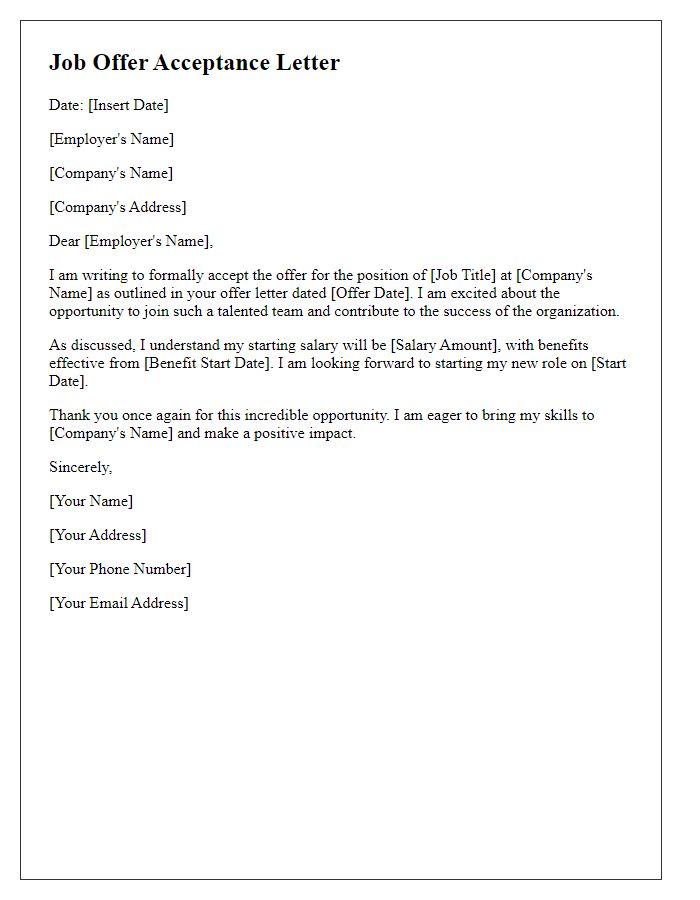
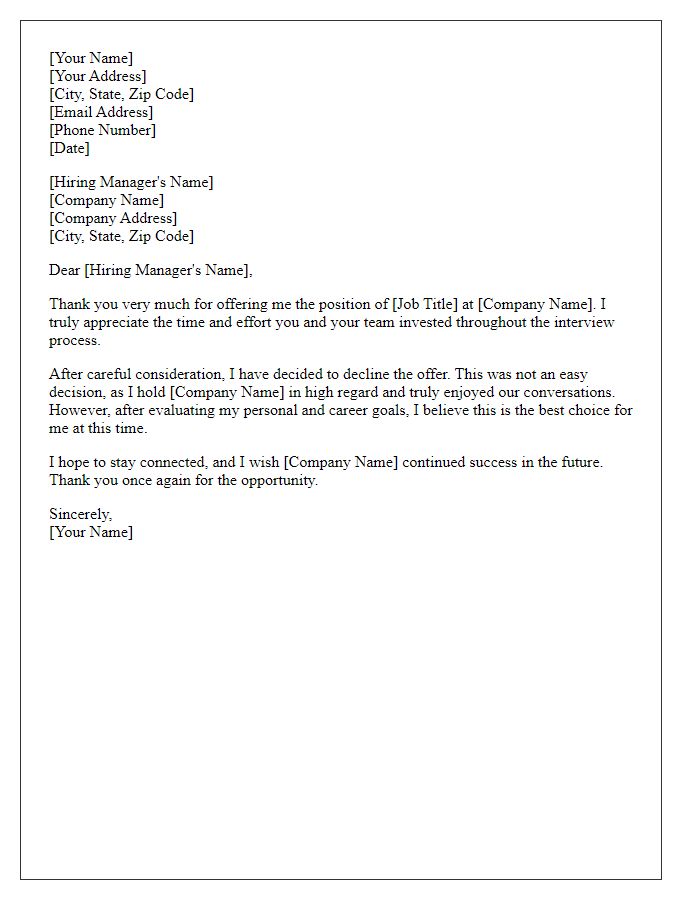
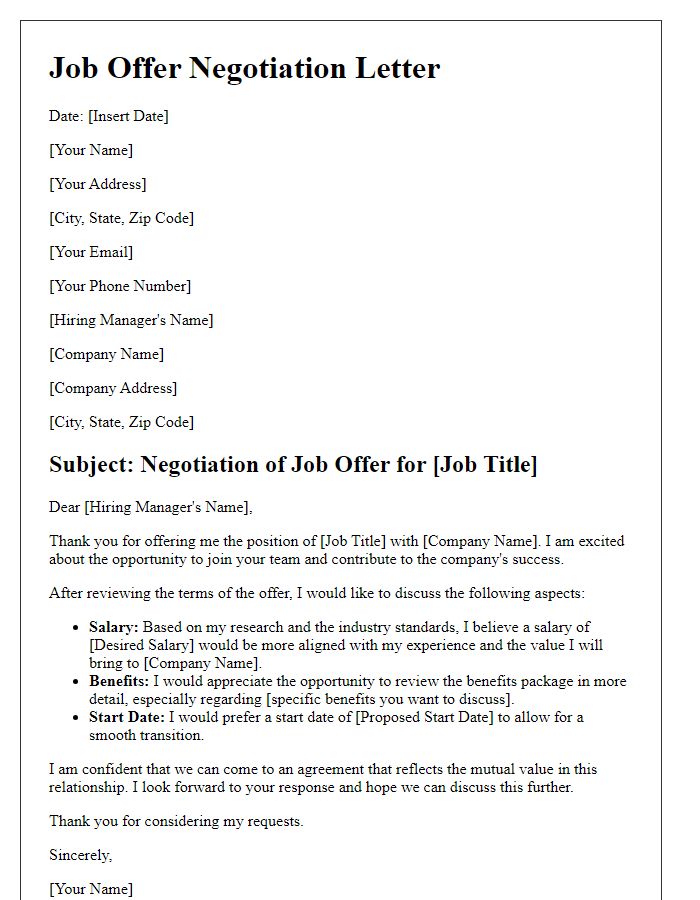
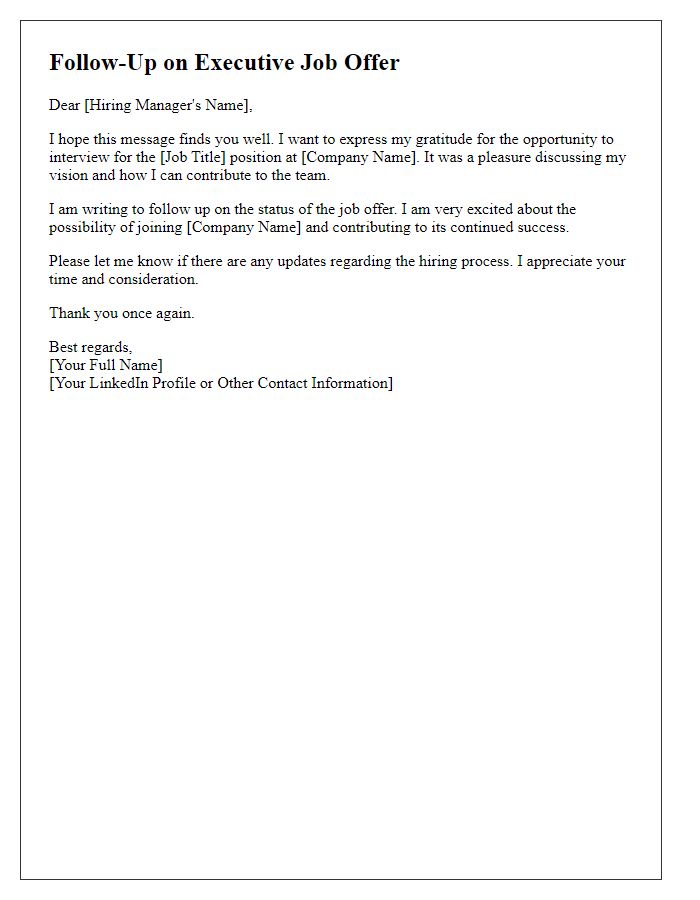
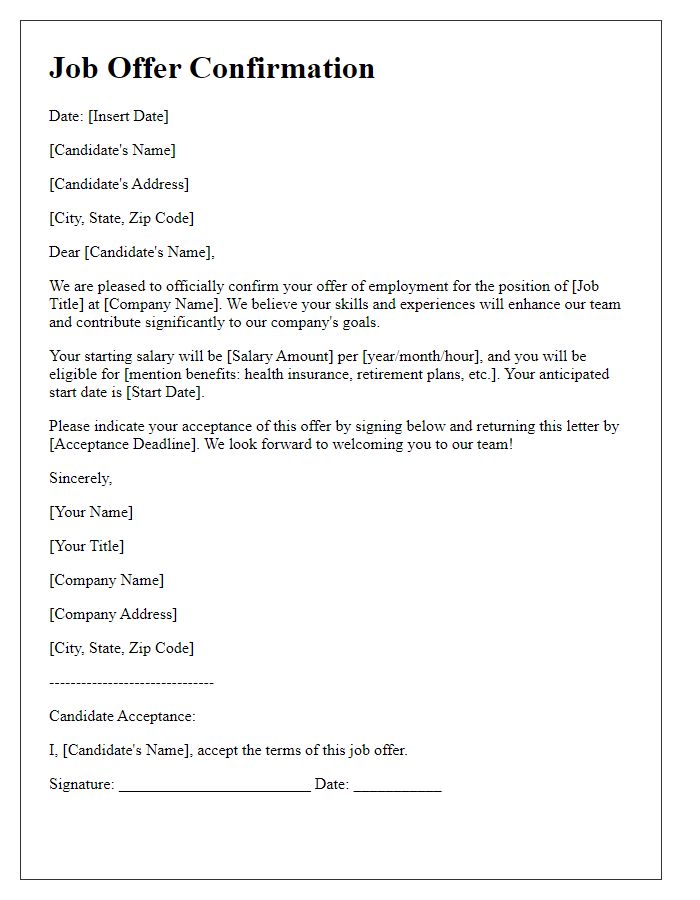
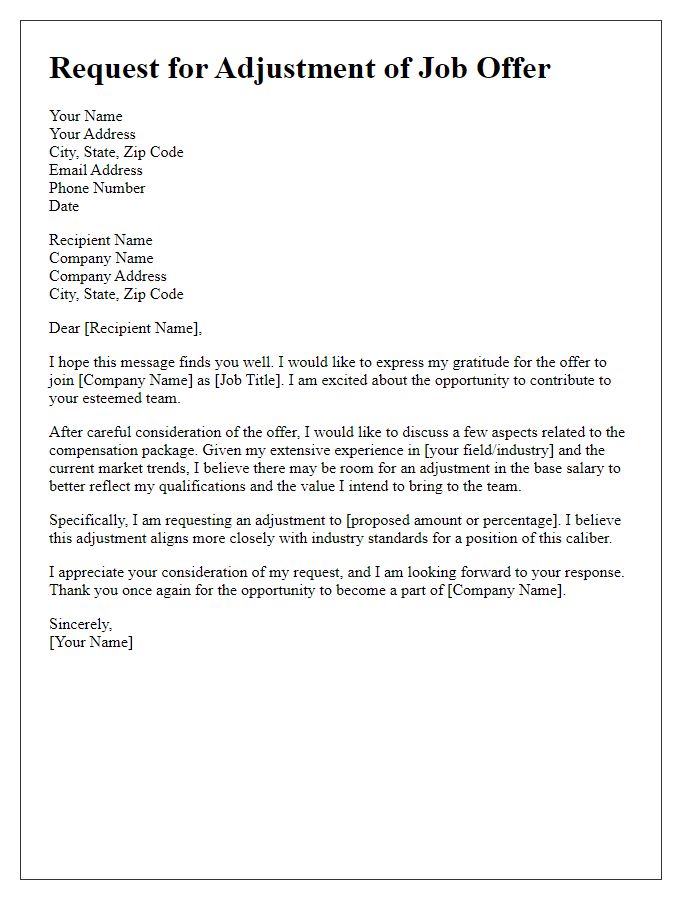
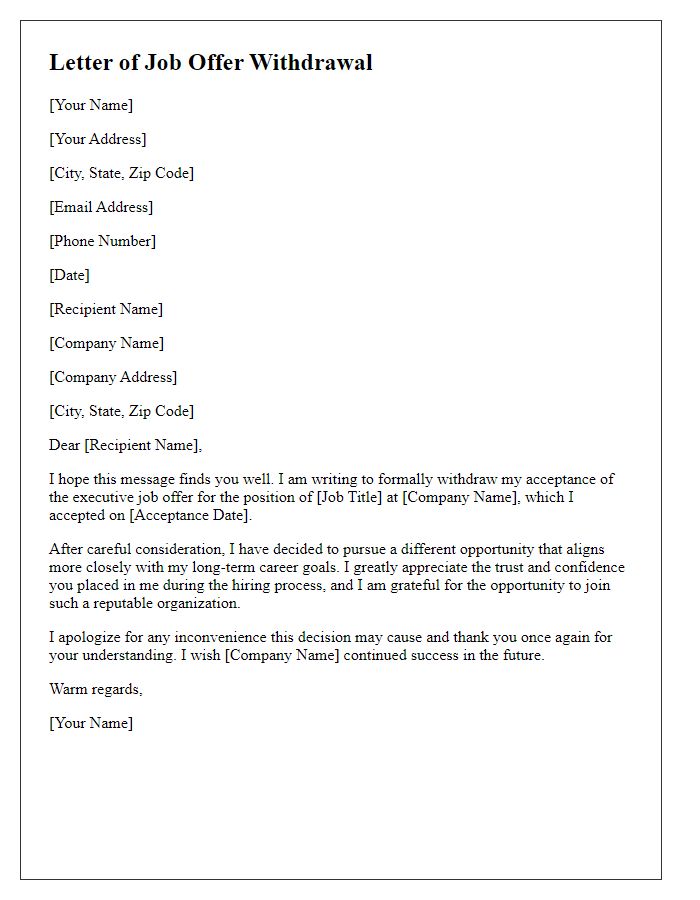
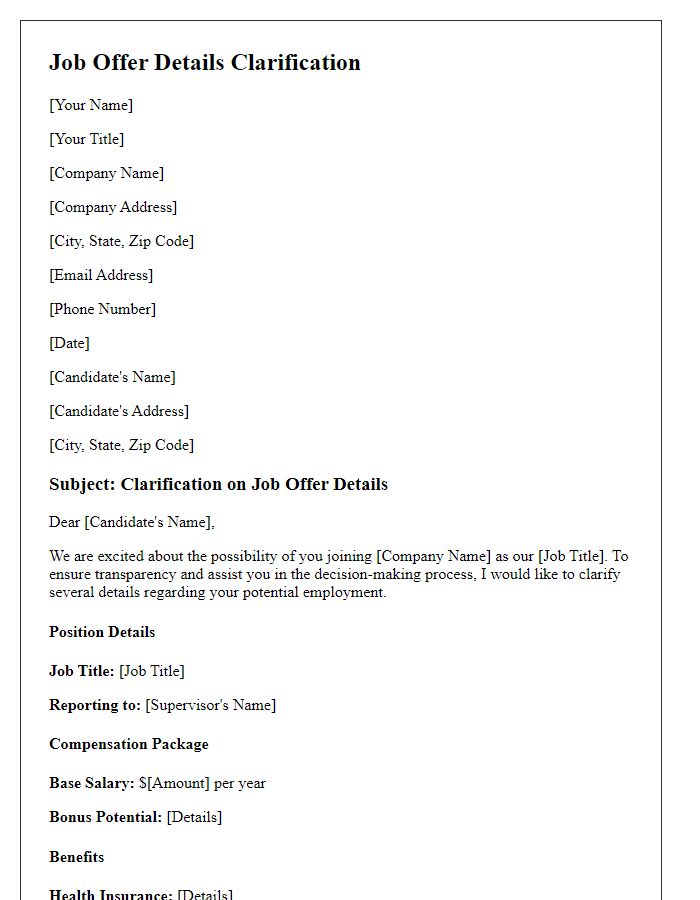
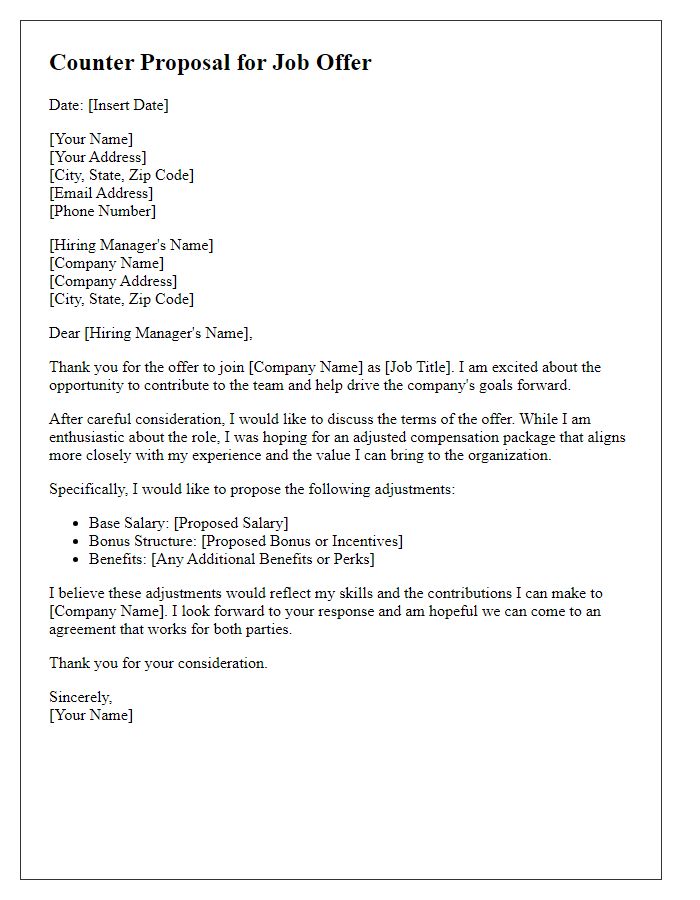
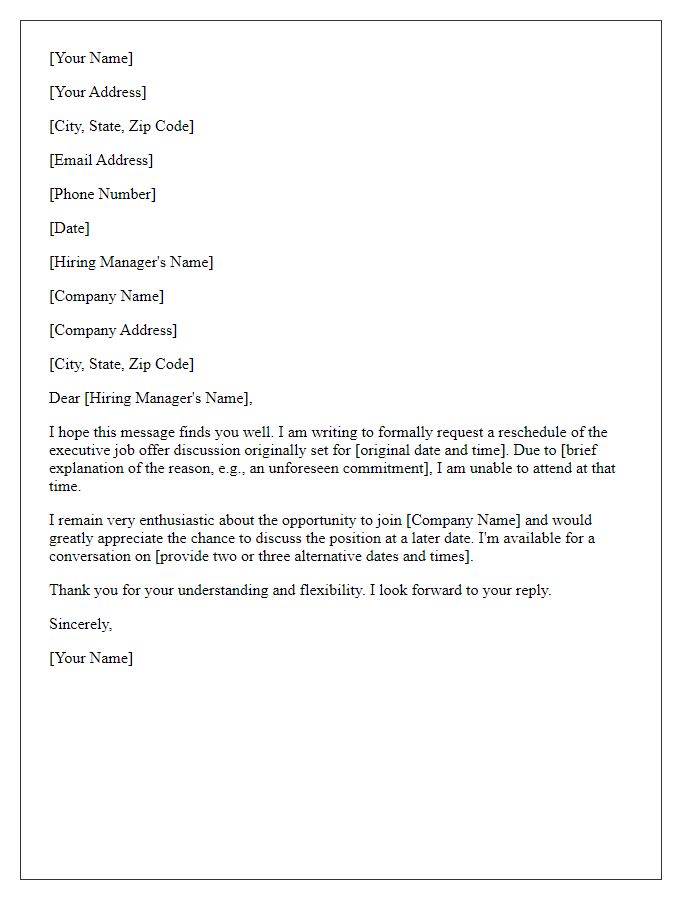


Comments